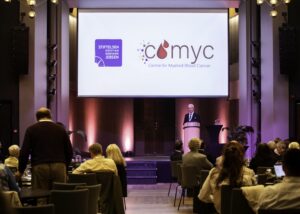
The first annual symposium and official opening of the new K.G. Jebsen medical research Centre for Myeloid Blood Cancer (C-MYC) took place on the 11-12th of September at Grand Bergen.
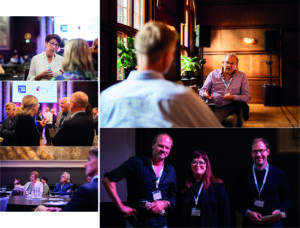
The centre located at University of Bergen and collaborates closely with Haukeland University Hospital and the University of Oslo. K.G. Jebsen currently has 6 active centres, and this would be its 25th Medical research centre.
The beautiful venue and traditional Bergen autumn weather facilitated excellent talks, networking and meetings. The C-MYC opening symposium ran parallell to the seminar organised by Norwegian blood cancer patient organisation “Blodkreftforeningen” symbolising the close collaboration and joined effort between researchers and patients.
Patients suffering from acute myeloid leukemia(AML) recieve a standard induction therapy of cytarabin and anthracycline (7+3 regimen) to induce complete remission. High risk patients are often older and have existing chronic illnessessuggesting they areeligible for targeted therapies or other drug regiments. The response to therapy is often not identified until weeks or months after treatment has commenced. By detecting response early using functional single-cell profiling we may identify responders within hours or days.
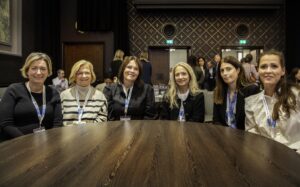
The main goal of the new K.G. Jebsen medical research Centre for Myeloid Blood Cancer (C-MYC) is to develop single-cell diagnostics to reveal early treatment response and implement this information to optimise and guide treatment. By studying the identity of single-cells of the blood and bone marrow of the patient we recieve dynamic information that can allow for a tailored treatment. To achieve this C-MYC will increase the number of clinical trials for the AML patients and strengthen cooperation between treatment centres in Norway andin the nordic countries.
Centre organisation
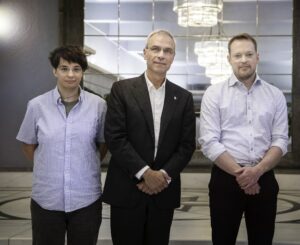
Professor and Centre director Bjørn Tore Gjertsen is joined by professor and co-director Simona Chera (Department of Clinical Science at UiB) and professor Eivind Dale Valen (Department of Biosciences at UiO). This trio of principal investigators form the scientific and operative nucleus of the Centre.
Gjertsens research group main focus is the single-cells functional profile, signalling and patients early response to therapy by using mass cytometry. Around 200 patients will be offered to participate with blood samples through their general practitioner or the patient foundation “blodkreftforeningen”.
Simona Chera focuses mainly in stem cells and their cell fate. By studying how stem cells develop and cell fate mechanisms we can control the cell and specifically target the cell.
Eivind Dale Valen says that the most important part of this is to identify non-responders. Non-responders should be moved to a treatment plan better suited to induce a response and disease remission. By applying new single-cell technology we can map proteins activity and gene translation.
Scientific Program
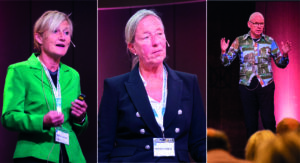
The symposium included a broad range of current topics on AML research where many renowned international speakers gave exciting talks. Among them the scientific advisory board members Konstanze Döhner (“Molecular measurable residual disease monitoring in Acute Myeloid Leukemia (AML)”) and Kirsten Grönbek (“Targeting Epigenetics: A new strategy in myeloid cancer prevention?”) started of the symposiums scientific program. Professor and chair of the board Roger Strand lamented the importance of responsible research when it comes to interaction with society and patient and societal participation. See the full program here.
The most often mentioned key word at the symposium was molecular residual disease monitoring (MRD) and its importance in disease monitoring and clinical trials of AML. Molecular residual disease is a measurement of the amount of leukemia cells present in the blood of the patient after treatment.
Molecular Residual Disease monitoring
Konstanze Döhner (“Molecular measurable residual disease monitoring in Acute Myeloid Leukemia (AML)”) highlighted how MRD reporting is if critical importance and clinically relevant when standardized between centres. Technical developments of MRD measuring by next generation sequencing (NSG) allows for standardisation in the European leukemia net MRD recommendations. Konstanze presented how MRD could be used as a tool for predictive value in clinical trials as well as how it can be used as a surrogate end point for drug testing. Astrid Olsnes (“Minimal residual disease in Myelodysplastic Syndrome “) specified how analysis of bone marrow samples allowed for more sensitive MRD testing than that of blood. Myelodysplastic syndrome is a pre-leukemic stem cell disease and the with fewer leukemic blast cells in the blood than that of AML. Together with genetic monitoring using NGS multi colour flow cytometry proves powerful in detecting and following MRD.
Graft versus host disease after transplantation
When a patient achieves complete remission, a key consolidating treatment is allogeneic transplant where the patient recieves healthy hematopoietic stem cells by another person to replace its lost and diseased cells. One major risk of a patient recieving an allogeneic transplant is the occurence of graft versus host disease where the patients immune system reacts toward the transplanted cells and attack them. This can present as a range of inflammatory sympoms in skin, GI tract and other organs. Yngvar Fløisand talked about the differences between acute and chronic GVHD and how the two were adressed in the clinic. A clinical trial including 94 sites and 343 randomized patients recieving Vedolizumab resulted in significantly higher aGVHD free survival. Vedolizumab is a gut selective drug that reduces inflammation by inhibiting the migration of GI T-cells. It is given together with standard GVHD prophylaxis. Håkon Reikvam studied the miRNA profiles of patients after recieving allogeneic transplantation to identify miRNA association to chronic graft versus host disease. Reikvam identified 10significantly miRNA (micro RNA are single stranded non coding RNA molecules) in more than 70 patients presenting with cGVHD. miRNAs are quite stable in blood and proving to be biomarkers for several diseases
Clonal Hematopoiesis

Acute myeloid leukemia is a clonal hematopoietic disease. Gerwin Huls presented how the classic risk factors and mutations are not necessarily the best detectors of disease prediction and progression. The fastest growing clones driving clonal progression were often associated wity cytopenias or anemias. Huls highlighted that when clones where monitered over time JAK2 mutated clones presented with higher growth rate and thus having a higher potential for clonal progression of leukemia. We often think of DNMT3A and TP53 as key mutations associated with AML, however, clones identified by these mutations only showed marginal increase over time. The key risk factor for monitoring clonal cytopenia of undetermined significance (CCUS) and clonal hematopoiesis of indeterminate potential (CHIP) is age.
Precision Medicine and therapy development in AML
The term refers to the diversity among patients and the need to tailor treatment to the patients clinical and genetic profile as well as taking the patients lifestyle and environment into account. In AML many patients have existing conditions prior to diagnosis and they may also be of elevated age, excluding them from traditional standard therapy. These patients may rather be put on drugs targeting a mutation the patient may harbour. The Ven ex trial presented by Mika Kontro, showed how patients found unfit for intensive chemotherapy may have therapeutic effect and increased survival by a combination venetoclax and azacytidine. Jorrit Enserink demonstrated how dose response and sensitivity testing can be used to find drugs for individuals or groups of patients. By performing CellTiter-Glo on patients samples(ex vivo) exposed to drugs from their anti-cancer compound library. Andrea Lenartova presented the results of a Phase 1 study to study 5-FU-mir-15a (CR001) in AML. The drug was tested on patients above the age of 70 with adverse risk AML.
Who are the responders to treatment? What biomarkers or features of the patients can predict the long term survivors? Vladimir Lazarevic presented how there are obvious clinical differences determined by age. Patients of elevated age are subjected to less diagnosis and prognostic procedures and are less likely to go through intensive chemotherapy. Studying the biological distinctions and similarities among patients in different age groups is directly impacted by the differences of clinical intervention.
To increase the biological knowledge on AML and to guide treatment it is increasingly important to register patient data and allow for centre and country interoperability. Data networks allow for larger meta analysis allowing the researchers and clinicians to identify new biomarkers, standardise clinical intervention and cooperation. Kimmo Porkka presented the networks present in the nordics and within Europe and how they communicate to optimalise interoperability. Patient data from Norway is linked to the DARWIN EU registry and more centres are joining the initiative.
C-MYC
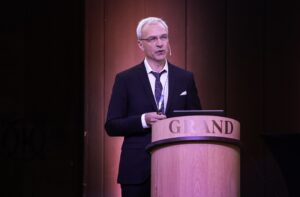
The opening and first annual C-MYC symposium focused on the “hot-topics” of AML, presented by researcher and clinicians affiliated with the Centre, such as clonal evolution and clonal progression, Molecular measurable disease, Graft Versus host disease, Precision medicine and technological advancement of the single-cell omics. Centre director Bjørn Tore Gjertsen commented:
Presentations and discussion at this opening symposium formed a basis of knowledge and enthusiasm that should help C-MYC to succeed with its high ambitions in designing new diagnostics and therapy. I am grateful to the KG Jebsen Legacy for funding C-MYC, and University of Bergen for hosting this Centre the next five years
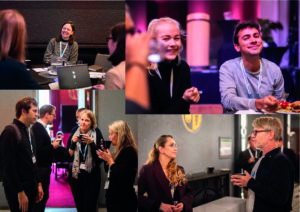
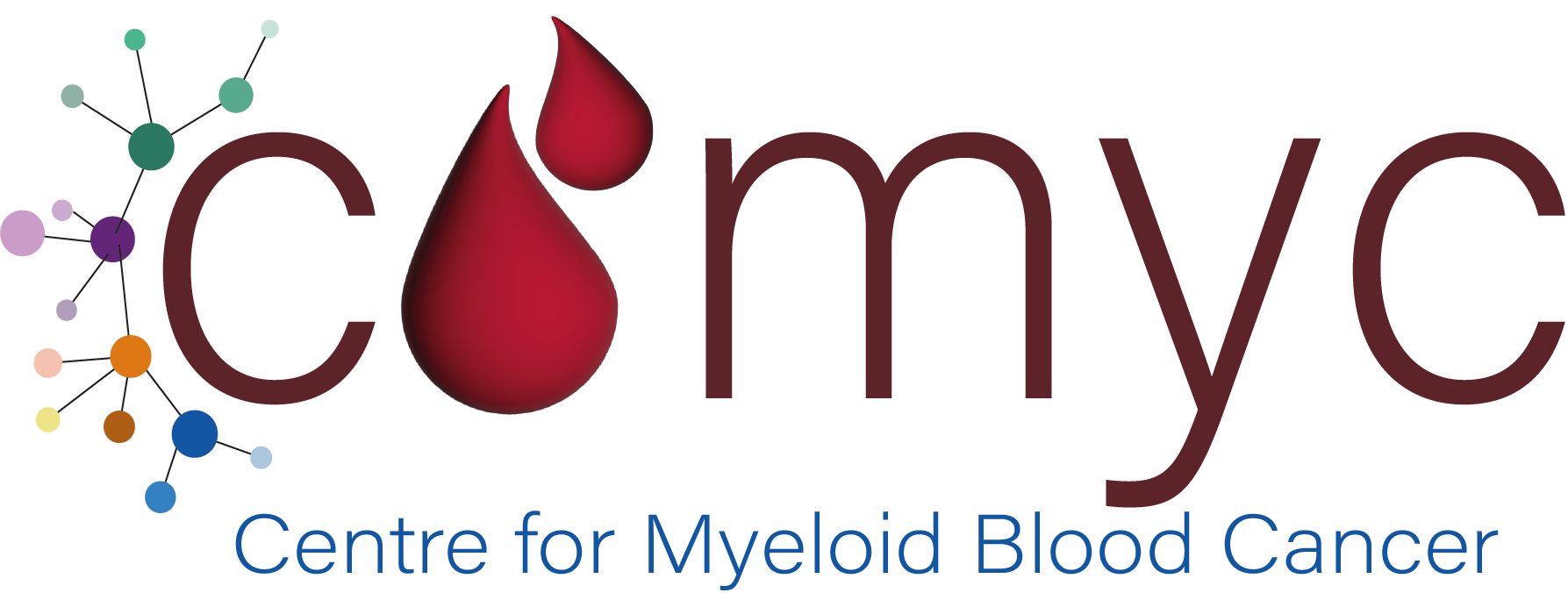
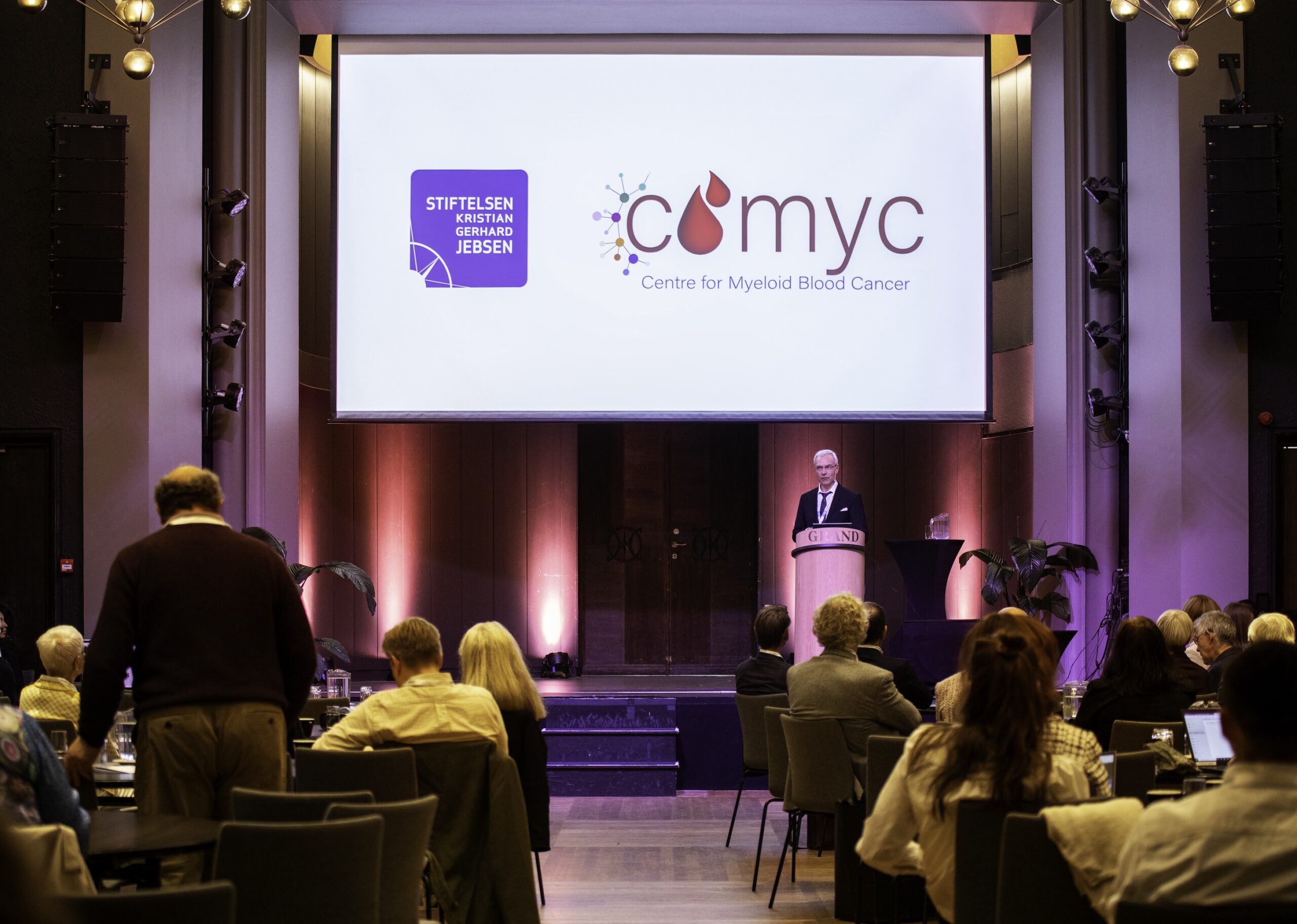
Comments